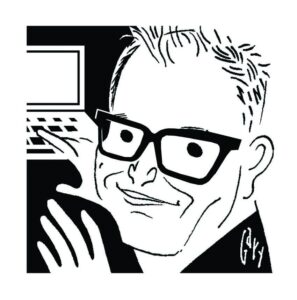The Editor: "Not the last time Mr Motor Racing appears in our pages"

If that’s so, perhaps we should take some comfort from that terrible day when Moss’s Lotus careered into the bank during the Glover Trophy. It gifted the world nearly 60 more years of one of the greats, not just of the track but of this country, too.
There were other wonderful drivers and brilliant men from that era – Jim Clark, of course, Graham Hill, John Surtees – but none represent so much of what is great about motor racing quite like Mr Motor Racing himself. His name became a byword for speed. He set the template for what a modern racing driver was. Even in old age, he invented the most debonair of things – a retired racing driver.
Even the famous absence of a World Championship title from his otherwise stellar CV only served to increase his standing in the eyes of many. Not only for the sportsmanship that ultimately cost him one in 1958 but also for the full-throated, nothing-by-halves mentality and patriotism that characterised his driving and team choice. “If Moss had put reason before passion,” said Enzo Ferrari, “he would have been world champion many times.”
As Mark Hughes says in his beautifully judged obituary on our website, “He was one of those very special ones who could seemingly transcend the accepted definition of ‘possible’ and that directly translated into his public standing as he became a ‘name’ reaching beyond the sport in much the same way as did Muhammad Ali in boxing or Pelé in football. Although he last took part in a grand prix 59 years ago, this magician of the wheel’s reputation has rung through the generations.”
That much is true. Polls showed that in his pomp Moss was more popular than the Queen (it’s easy to forget how racing at the time was so dominated by European teams and drivers) while his jet-set lifestyle even inspired James Bond style-parodies.
Three-time World Champion Jackie Stewart, who arrived in F1 shortly after Moss’s retirement, put it best when he said in tribute: “He walked like a racing driver should walk, he talked like a racing driver, he looked like a racing driver, and he set a standard that I think has been unmatched since he retired.”
But for all that, perhaps the most remarkable thing about Stirling Moss was that he never lost touch with his fans, the ordinary racing enthusiasts for whom he was such a hero.
In the days after his death, Motor Sport was inundated with letters from fans eager to share their memories of him, and perhaps it is through them that we get a true sense of the man as well as the driver.
We have collected a sample of them on pages 66-67. Many recount a common theme: memories of seeing Stirling at Aintree to spark a lifelong interest in motor racing; meeting Stirling at Goodwood in modern times, being embarrassed to say ‘hello’ but being greeted with a smile and an arm around the shoulder for a photo; a letter sent to the office of Stirling more in hope than expectation, and being surprised to receive a personal reply showing that Stirling had not only read the initial correspondence, but had thought about it, too. Others reveal his loyalty and profound decency. We probably all know that after he was discharged from hospital, Stirling took all the nurses who had cared for him out to dinner and the theatre. But did you know that he quietly kept in touch with the nurse who may have saved his life at the track after the 1962 crash? As now retired Annie Strudwick relates, she was volunteering at Goodwood and was first on the scene after the crash, administering first aid.
“I still have burns on my hands from that day,” she says. “People say I saved his life, but I was just doing what I was trained to do. After the accident he became a good friend, we watched him race with his lovely wife Susie. When he did his autobiography, he signed it and wrote: ‘You were there when I needed you most’. On the track he was a demon, off the track he was a lovely person.”
One letter from a Mr John S West from Los Angeles ends like this: “So, I never had the pleasure of meeting Stirling Moss. Yet, at the risk of sounding presumptuous, I feel like I knew him just a bit. His passing was massive even without that tiny connection. With that connection, I can honestly say that the world of motor sport is considerably more impoverished today. I hope that this letter to Motor Sport inspires those who are today’s stars and tomorrow’s legends to live up to the legacy of Sir Stirling Moss.”
I hope you enjoy our special issue celebrating the life and career of Stirling. You can be assured that despite the sadness around his death, this will not be the last time that Mr Motor Racing appears in our pages.
